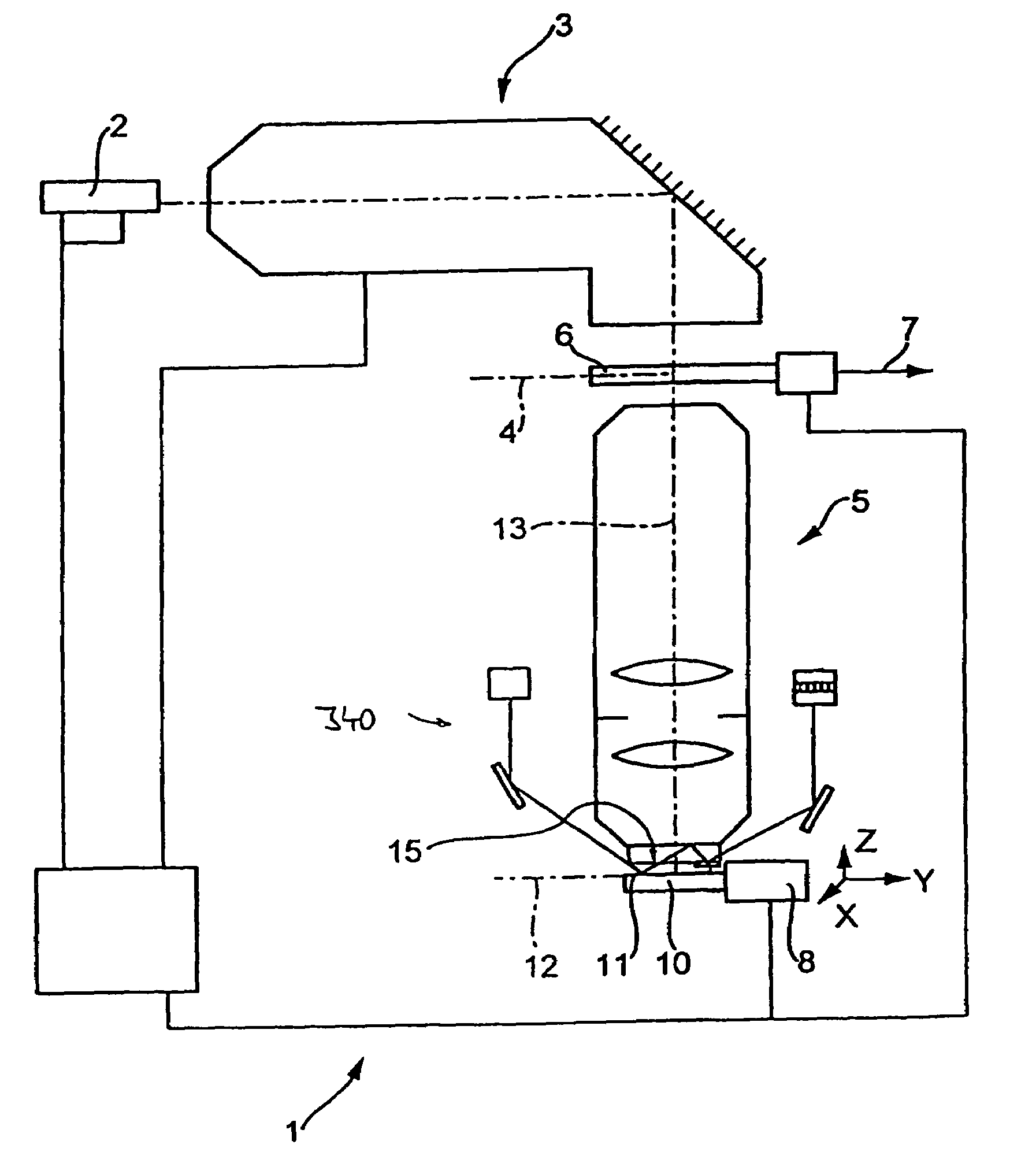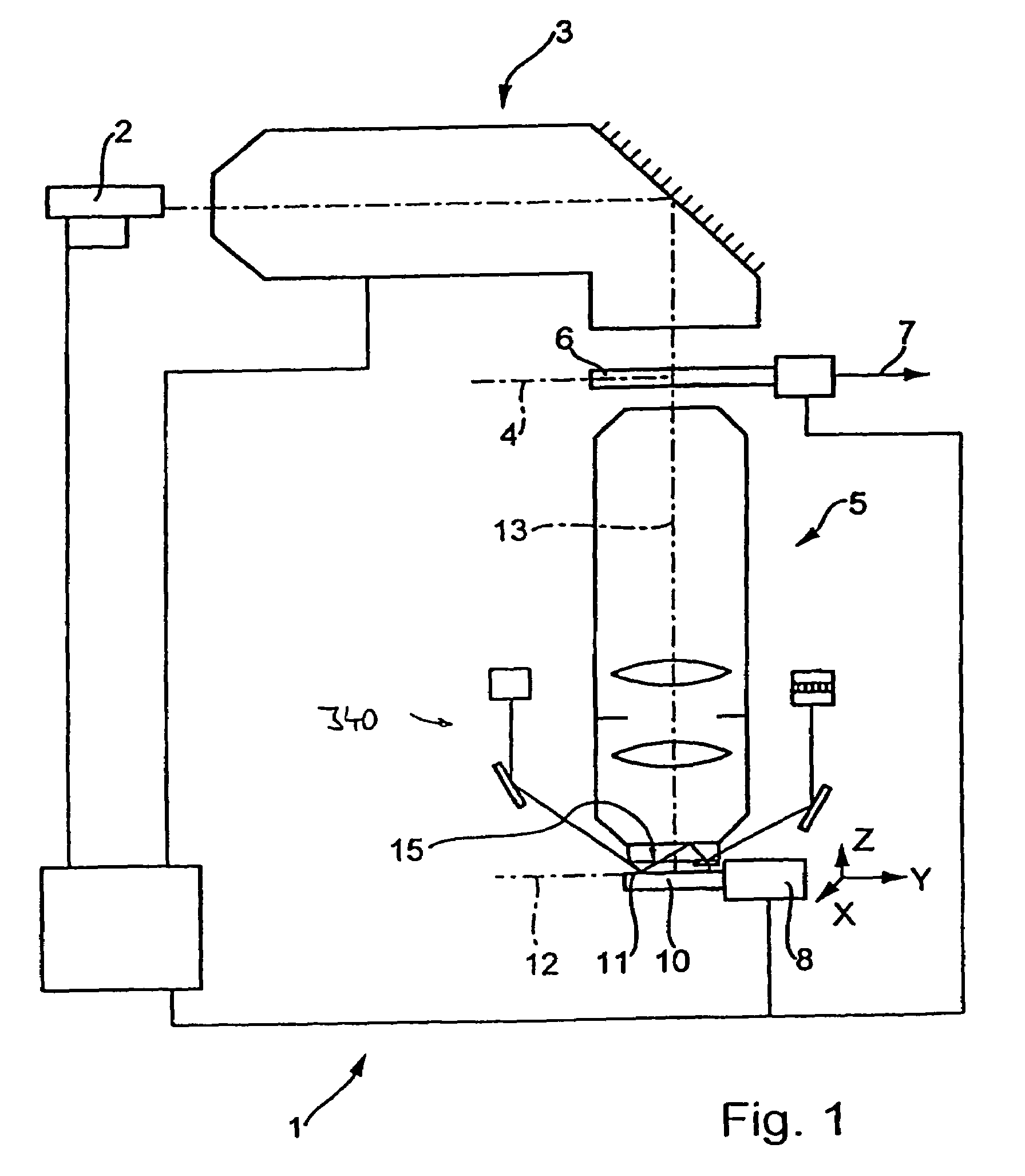Projection exposure method and projection exposure system
a projection exposure and projection exposure technology, applied in the field of projection exposure methods and projection exposure systems, can solve the problems of birefringent properties, limited availability, and difficulty in shortening the operating wavelength in the region below 193 nm, and achieve the effect of reducing the throughput of exposed substrates and improving image quality
- Summary
- Abstract
- Description
- Claims
- Application Information
AI Technical Summary
Benefits of technology
Problems solved by technology
Method used
Image
Examples
Embodiment Construction
[0038]FIG. 1 shows a diagram of a microlithographic projection exposure machine in the form of a wafer stepper 1 which is provided for manufacturing highly integrated semiconductor devices. The projection exposure machine 1 comprises as light source an excimer laser 2 with an operating wavelength of 157 nm, other operating wavelengths, for example 193 nm or 248 nm also being possible. A downstream illuminating system 3 produces in its exit plane 4 a large, sharply delimited, very homogeneously illuminated image field which is adapted to the telecentric requirements of the downstream projection objective 5. The illuminating system 3 has devices for selecting the illuminating mode and in the example can be switched over between conventional illumination with a variable degree of coherence, ring-field illumination and dipole or quadrupole illumination. Arranged downstream of the illuminating system is a device for holding and manipulating a mask 6 such that the latter lies in the objec...
PUM
| Property | Measurement | Unit |
|---|---|---|
| operating wavelength | aaaaa | aaaaa |
| wavelengths | aaaaa | aaaaa |
| wavelengths | aaaaa | aaaaa |
Abstract
Description
Claims
Application Information
 Login to View More
Login to View More - R&D
- Intellectual Property
- Life Sciences
- Materials
- Tech Scout
- Unparalleled Data Quality
- Higher Quality Content
- 60% Fewer Hallucinations
Browse by: Latest US Patents, China's latest patents, Technical Efficacy Thesaurus, Application Domain, Technology Topic, Popular Technical Reports.
© 2025 PatSnap. All rights reserved.Legal|Privacy policy|Modern Slavery Act Transparency Statement|Sitemap|About US| Contact US: help@patsnap.com



